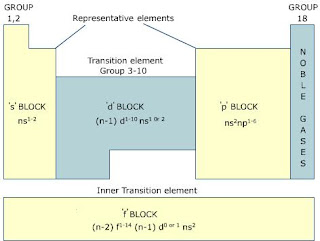electromagnetic force electricity and magnetism
Introduction
In the realm of physics, the universe holds many secrets that have captivated human minds for centuries. Among these enigmas lies the phenomenon of electromagnetic force, a fundamental force of nature that governs the behavior of charged particles and is responsible for the intricate dance of electrons and photons. This invisible hand is the driving force behind everything from the dazzling displays of auroras in the night sky to the simple act of flipping a light switch. In this blog post, we will delve into the captivating world of electromagnetic force, exploring its fundamental principles, historical discoveries, real-world applications, and its role in shaping the very fabric of our reality.
1. Understanding Electromagnetic Force: The Basics
At the core of electromagnetic force lies the marriage of electricity and magnetism, two seemingly distinct entities that physicist James Clerk Maxwell unified in the 19th century. Electromagnetic force is described by the laws of electromagnetism, formulated by Maxwell and further extended by other luminaries like Michael Faraday and Albert Einstein.
The electromagnetic force is mediated by the exchange of photons, particles of light that transmit the force between charged particles. It operates on two types of charges: positive and negative. Like charges repel each other, while opposite charges attract. This attractive and repulsive behavior underpins the interactions of charged particles, leading to a rich tapestry of phenomena.
2. Historical Milestones: A Journey through Time
The story of electromagnetic force is steeped in a rich history of scientific discoveries and groundbreaking experiments. From ancient observations of static electricity to the development of the modern theory of electromagnetism, we'll take a chronological journey through some of the most significant milestones in understanding this force.
We'll explore the contributions of luminaries like Benjamin Franklin, who famously flew a kite in a thunderstorm to demonstrate the electrical nature of lightning, and Hans Christian Ørsted, who discovered the link between electricity and magnetism. Additionally, we'll delve into the experimental work of Faraday and the mathematical elegance of Maxwell's equations, which laid the foundation for the modern understanding of electromagnetic force.
3. Electromagnetic Waves: The Language of Light
One of the most astonishing revelations in the study of electromagnetic force was the discovery of electromagnetic waves. Maxwell's equations not only revealed the intimate relationship between electricity and magnetism but also predicted the existence of these waves, traveling at the speed of light.
This section will explore the properties of electromagnetic waves, their spectrum, and the role they play in various real-world applications. From radio waves and microwaves to X-rays and gamma rays, each segment of the electromagnetic spectrum has unique characteristics and applications that shape our modern world.
4. Electromagnetism in Everyday Life
Electromagnetic force is not just confined to the realms of scientific inquiry; its practical applications have revolutionized our daily lives. This section will shed light on the various ways electromagnetic force impacts our world.
We'll discuss the workings of electric motors and generators, the backbone of many industrial processes and transportation systems. Furthermore, we'll delve into the fascinating world of electromagnetism in telecommunications, where concepts like antennas and transmission lines are essential for modern communication systems.
5. Electromagnetic Force in the Quantum Realm
As we journey deeper into the realms of particle physics, we encounter the quantum world, where the classical laws of electromagnetism begin to intertwine with the strange rules of quantum mechanics. This section will introduce readers to quantum electrodynamics (QED), the quantum field theory that beautifully describes the interactions of charged particles and electromagnetic fields.
We'll explore virtual particles, the Lamb shift, and the concept of renormalization, which all play pivotal roles in QED. While this realm may seem abstract and esoteric, its predictions have been experimentally verified with unprecedented precision, affirming the theory's robustness.
6. Electromagnetic Force and the Cosmos
Our cosmic journey wouldn't be complete without exploring the role of electromagnetic force in shaping the universe. From the grandeur of celestial light shows like auroras and solar flares to the delicate dance of charged particles within nebulae, electromagnetic force plays a crucial role in the cosmos.
Additionally, we'll discuss the intriguing phenomenon of electromagnetism within celestial bodies, like the Earth's magnetic field and its role in protecting us from harmful solar radiation.
Conclusion
Electromagnetic force, with its intricate interplay of electricity and magnetism, has undoubtedly left an indelible mark on humanity's quest for understanding the universe. From its inception as a mysterious force to the elegant equations that bind it, this invisible hand continues to inspire scientists, engineers, and dreamers alike.
By exploring the basics of electromagnetism, historical milestones, practical applications, quantum implications, and cosmic connections, we can begin to appreciate the profound impact of electromagnetic force on our lives and the fascinating mysteries it continues to unravel. As we gaze at the starry night sky, we are reminded of the dance of charged particles, guided by nature's invisible hand.
















